Concrete in its properties is a unique material. It applies not only for construction workBut also for the construction of all sorts of facilities and buildings. Many piece goods are also made of it, for example, such as: vases, balusters, and even countertops for the living room, the lane in the garden. Modern methods of making concrete and its further processing helps to be on one level with such materials as marble or granite. Although this material is not very aesthetic, unlike the latter, but still everyone has long been known, from which it is made.
If you have decided not to buy concrete, it is necessary to find out how this material can be made on your own, so that it can meet the necessary qualities and will have excellent strength and long service life. Although the procedure for making concrete is the simplest, it is necessary to take into account a number of some nuances and features that will determine its further quality and suitable properties. Depending on the main objectives for which this material is manufactured, its scope of application will be changed, as well as the recipe.
What qualities has concrete
And if you wished to learn how to make concrete with your own hands, then you must take into account the proportions. But before, talking about the process of manufacturing this building material, it is necessary to find out what concrete represents, and what basic qualities it possesses.
Basically, concrete consists of a mixture of special filler and cement. Based on this, the most important ingredients of the concrete are: sand, cement and filler. What as a filler can be: pebbles, crushed stone, gravel and other solid materials. IN modern technology The manufacture of this composition is assumed to use some additives, such as plasticizers. Their main goal is to give concrete of additional unique properties.
The most important properties of concrete must be compression and strength. The last property is usually expressed in mega Pascal (MPa). They define the class of concrete, as well as pressure. Depending on the strength, the concrete is divided into the corresponding brands. In the CIS countries, the approved GOST classes have the following designation:
B7.5-B80. Their main difference depends on the type of cement, which is used in the preparation of concrete.
(M300-M-600), as well as all sorts of fractions, sand, and crushed stone. The numbers in the class name, as a rule, denote the pressure in MPa, which concrete will withstand in 96% of cases.
The easiest option of concrete is a simple mixture of large sand and cement mortar. This type of concrete is largely used as a foundation or substrate. It is possible to make such a concrete at the bottom of the formwork when the foundation is arranged. In this case, when preparing, a small amount of water should be added to the mixture, for the possibility of purchasing its density. The strength in this case will be absent, but this material will be protected for the foundation.
For the manufacture of a more durable concrete, all sorts of crushed stone, having a fraction from 2-3 mm and up to 35-40 mm, must be used as the main fillers. The quality of such a material will depend on the components used, and the composition.
Based on this, you can make the following conclusion - before you begin to understand the methods of preparation of concrete and its proportions, to possibly make a concrete solution correctly, it is necessary to very carefully examine each ingredient individually.
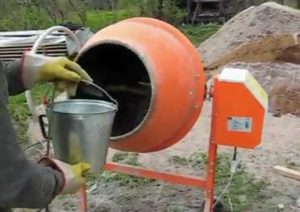
Requirements for concrete components
Cement.
Cement is one of the most important and unity of its kind components, which provides a bunch of all ingredients into a single whole. Portland cement is more suitable for the manufacture of concrete. It is distinguished by the increased content of calcium silicates (up to 79-80%). This in turn will provide better adhesion and excellent gluing of all materials. But still, depending on the task, any other types of cement can be applied.
More suitable for frequent use by the cement brand are 500. You can also apply the standard brand M 400. But this may affect the service life of the foundation. Portland cement is great for working at low temperatures. But still, it should be remembered that it is impossible to work with concrete at temperatures below 15 degrees. But if there is a weighty reason to apply concrete at a very low temperature, then you will need to take the use of special additives and various plasticizers. We will tell about it later.

When carrying out work during hottime, it is better to use SlagoporTland cement. In Russian marking of cement, in addition to the designation of its strength (MPA), there is still a designation D. after this letter, as a rule, a digit is prescribed, which indicates the number of foreign impurities in this cement. Thus, for the manufacture of a well-known concrete, the cement is best suitable for the M500-BD, or M500-D20. (with impurities from 0 to 20 percent).
Cement must be dry. It is impossible to buy a lot of redeemed cement with lumps. Also, it is not necessary to save too much on its acquisition, and buy a non-marked material, or shred. And all because concrete will be applied to build the main elements of a residential building. And from its appearance, the quality of construction will depend on. Remember that your security depends on this fact. In bad conditions, cement begins to absorb a large amount of moisture from the air. Thus, its main qualities are lost.
Buy the volume of cement required you is better in advance (2-3 weeks before it is applied). When buying, it is necessary to carefully check the presence of labeling and integrity of the packaging itself.
Sand.
Not depending on which you will use the aggregate (gravel or crushed stone), you will also need sand. Only in some casesYou can do without it without it, when there is an opportunity to make a ramp of a large aggregator in such a way that all intervals between the constituents were small. That sand, which is more suitable for the manufacture of concrete, must necessarily contain a fraction from 1.7 to 5 mm. But it is best when this material is uniform size (no more than 1-2 mm). There should be no different third-party impurities in the sand. Various vegetable residues or any inclusions that have the likelihood of decay with time will adversely affect the solid properties of concrete. But if the sand is not very clean, it is easier to sift it through a special sieve having small cells. You can also do with rubble. When making concrete, it is best to use river sand. Of course, this material will at least differ from the ambition, but it will have the desired size of the gruses, and it will not be present in it or or clay. The most important thing is to provide excellent adhesion of a cement mortar having large aggregates that will determine the strength of the concrete itself. It follows that sand, with a sublink content, or grains, having a size less than 1mm, it is better not to apply in the manufacture of concrete, as it will be very difficult to delete them. To do this, it is necessary to produce the procedure for settling sand and its washing, which is difficult to do even in industrial conditions. For those places near which stone careers are located, artificial heavy sand can be applied. It can be obtained thanks to the crushing of rocks. It is distinguished by its density and greater mass. If you make an excellent flushing and cut off particles in size, then this material will be better than river sand by its properties. It should only take into account the fact that when it is manufactured and further applications, the concrete will turn out much harder. This is an important fact, if it is applied to the manufacture of screeds on top of multi-storey overlaps. Weighing obstacle to the use of heavy sand can be a high radiation background.
Aggregate. Gravel, crushed stone.
The main and basic strength of concrete provides crushed stone and gravel. River or marine pebbles in this case will not suit, because the surface of this natural material Polished by water, thereby not be able to provide the desired clutch with the solution. It is best, as a placeholder, is suitable that material that is obtained from the fragmented rock. Very often, the ceramzite is used, or some similar material, which is quite durable, but at the same time easy. Below, in our article we will consider in more detail the principle with which you can select the desired material for the manufacture of concrete, providing it with reliability and strength.
In order to make concrete with your own hands, it is important to take into account its composition and proportion. Now we are talking about important materials that are used to make concrete composition. In this part of the article we are talking about an important component of concrete - gravel and crushed stone.
The size of rubble or gravel can be from 9 to 35 mm. And large pieces are used to a greater degree in production, but very rarely. It is best that the aggregate is in its composition a small amount of dust or various clay impurities on the surface. All the garbage should be removed until the gravel is introduced into the solution. The more roughness on the edges of the particles, the better. From this fact will depend on excellent and reliable clutch. In order for himself, with their own hands, it was possible to prepare concrete, it is best to use the aggregate in which there are particles of various sizes, or make a mixing gravel with an average. Since you do not have professional equipment in order to catch the concrete, it will be able to ensure the best fit of the particles of the aggregate used to each other, and will not be able to allow the appearance of large voids. Otherwise, they will be filled with mortar, and this will directly affect the strength of the concrete itself.
Store crushed stone and gravel better than a mound. And storage this material follows close to the place of its use. To avoid contamination of these materials, it is best to store embankment on dry tarpaulin, or a plot that has a solid foundation. In a simpler embodiment, when all materials are scattered directly to the ground, do not need to manufacture concrete, apply the bottom layer that in contact with it.
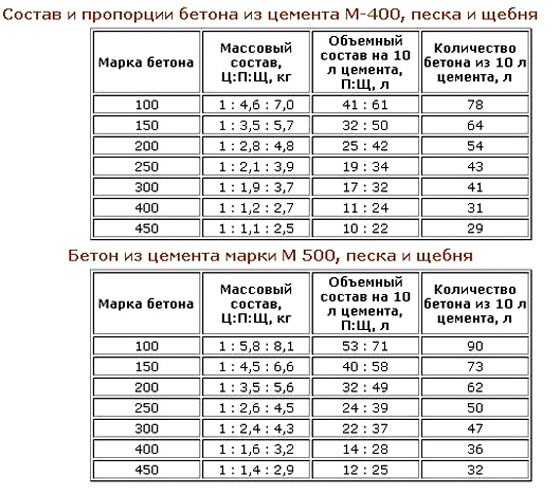
Water.
Highly an important points In the manufacture of concrete is the choice of water. It must necessarily be clean, and do not have third-party impurities and alkaline inclusions. Also should not apply river or lake water. You just need to fulfill the following rule: that water that is suitable for drinking will also be suitable for making concrete. If you are guided by this rule, then your concrete can serve as faithfully for many years.
Additives: Lime.
Most of the masters that contribute to the concrete a number of hazed lime, thereby increasing the laidness of concrete. It will be able to make the leveling process concrete screed much easier. But still, the lime can adversely affect the good bond of cement with the aggregate. This in turn will affect strength. By the way, no one has already been quenched on its own long ago. You can use the already cooked lime (hated). It can be found on sale in any construction store.
Plasticizers.
In order to give a concrete solution to a good turnover, or vice versa, to ensure maximum viscosity, as a rule, use different plasticizers that methods to change the properties of the solution in the desired direction. The use of plasticizers can significantly increase, or reduce the amount of water required for the manufacture of the solution.
For filling the foundation, plasticizers are not necessarily not necessarily use, but still, they will play a big role if the foundation has a rather complicated form, or reinforcement will be more dense. And more fluid concrete will be securely able to fill in all existing emptiness, which in turn will be able to speed up the process and improve the final result.
Plasticizers for concrete. Auxiliary elements.
In addition to the listed, it is quite realistic to apply special additives to be able to give concrete progressive properties. For example, you can apply additives for solidification and grasp concrete at low temperatures, or with high humidity. For the desired goals, appropriate additives applies. The most important thing is to determine for yourself, the need for their use, as well as pick up the desired additive in a specialized store. In this case, it is important to carefully examine the instructions for the properties and use of these additives.
In the same case, if the conditions for the use of concrete will wear boundary parameters, in humidity and temperature, the use of plasticizers and various additives will be necessary.
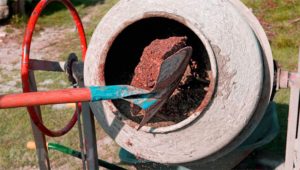
Reinforcing substances.
In addition to the aggregate to concrete, specific additives for reinforcement are used very often. For example, when applying concrete for the manufacture of a thin screed, a polyvinyl chloride or polypropylene fiber is used. This material Very soft and rather durable, but due to its use, you can avoid such situations where concrete begins to crack in those areas where the slabs of the overlap converge.
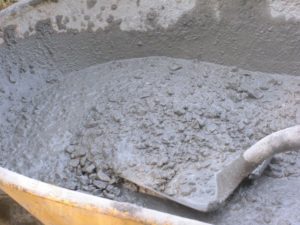
Selection of the ratio of all materials for the manufacture of concrete
For certain purposes, a different composition of concrete will also be required. Suppose to manufacture a foundation under a residential building you need to use a longer concrete, which will contain a large crushed stone with a size of 25 to 35 mm, and a certain amount of solution that is enough to strengthen the aggregate. In this case, it must be fluent, since it is necessary to more reliably make the mobble of concrete and try to remove all the resulting air bubbles from it. But after all, before starting to engage in the fill of the main number of concrete, you must first equip the substrate. As a rule, for this, it is applied more simple for the manufacture and not very durable concrete of 7.5, which in addition to cement mortar, includes major sand. Since the mortar of concrete is not very liquid, and it is more like a wet soil.
For the manufacture of the foundation, the average fraction of the aggregator is necessary, and also a liquid solution. This will help ensure easier distribution of the solution on the surface with a thinner layer. Everything else, the average and small fraction of the aggregate will be necessary in the manufacture of decor elements, balusters, or some kind of garden utensils.
The composition of concrete on components and their ratio must be carried out according to GOST 7473-94 and SNOP 5.01.23-83. In this case, it is also necessary to take into account the density of each component, and the average density of concrete. After carrying out the necessary calculations of all the ratios of the ingredients, it is possible to begin making the manufacture of concrete and its fill.
More common proportions of concrete are 1: 3: 6 parts of cement, aggregate and sand, and 0.5-1 parts of water. But still very often adhering to this layout, as a rule, it will turn out not very good on the quality of concrete. And this can be noted, only after a certain time. It is best to produce an easy calculation and prevent the appearance of trouble. After carrying out the necessary calculations, it is necessary to correctly select the method of measuring components. You will have only weighing and volumetric parameters in your hands, and they unfortunately incompatible with them. Such material as sand can be very wet, or loose. It follows that one bucket having a volume of 10 liters will not have the weight that can be calculated from the density ratio to the volume. If you disassemble the humidity of the same sand and gravel, they should be descended to dry out than to calculate the desired number of portions of these ingredients.
And in order to determine the looseness and calculation of portions, it is necessary to weigh the portions of each component to one volume. To do this, take a bucket, or other capacity and fill it with sand, aggregate and cement without tamping, and weigh the received portion.
Then, having completed simple calculations, you should translate the calculations in the Veda ratio.
How to knead concrete
Above, we described in detail each component of concrete. Now it is worth talking about how to make a concrete for the foundation with your own hands. It is now that you should specify which proportions need to be used in this case.
In order to replace concrete, it is necessary to apply special concrete mixers. Only in this way can be more high quality and quickly make mixing of all ingredients and deliver the resulting concrete to the right place. You can also make concrete yourself. There are two popular options:
- In the first embodiment, first it is necessary to mix all the ingredients in dry form, but only after that, pour water.
- In the second embodiment, cement, aggregate and sand is poured into died out and pouring water.
Stirring ingredients in a dry form seems that all materials have been distributed more evenly, but still there is no one hundred percent warranty that the entire volume can quickly get intoxicate. The result of this work you will receive the following: the bottom will remain non-mixed dry composition. And this means violations of proportions.
If this composition is long and thoroughly mixed, then a lot of time will pass, and the solution will begin to harden and flaw. And when making everyone required components The cement will be lost in the water quite a long time and will not be able to conclude with the filler.
The second option is still a bit better first. Based on this, it is thus necessary to knead concrete in small quantities.
Now we were able to find out that the manual is not very good. The easiest way, rent a concrete mixer or buy it. The concrete mixer should be no further than 40-45 meters from the place where concrete will be applied. All components should also be located near the concrete mixer.
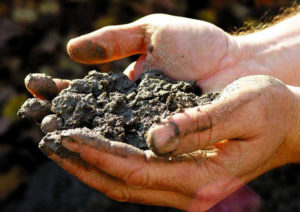
Concrete snacks
- The volume of the standard concrete mixer is 200 liters of the prepalanted solution. This figure it is necessary to carry out all calculations by the number of each component.
- Then you need to make a cooking concrete by adding it to the concrete mixer.
- After that, a certain amount of water is introduced into it. Approximately 10-15% can be added later. This in turn will be able to alleviate mixing after making all materials.
- Next, cement should be laid. If you were left some amount of water, then cement can also be left in the same quantity.
- Now the sand falls asleep. Mixing at this stage is needed to obtain a uniform distribution of all components.
- After the cement solution is made, you should add the required add. Components (additives, plasticizers). The most latter is the main aggregate (crushed stone, gravel).
- If you need to make water, then you must first mix it with cement, and pour the obtained cement milk into the concrete mixer. This procedure should take about 10-15 minutes in your time. If you interfere longer, then the cement in the solution will be captured.
- Delivery of the solution is made with a wheelbarrow. If the entire mixed solution does not fit in a wheelbarrow, then its residues need to be left in a working concrete mixer.
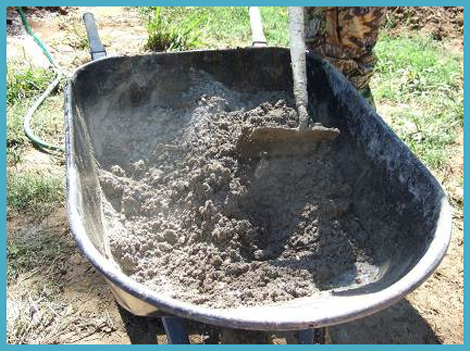
Pouring concrete
Now you need to competently pour, and then distribute the concrete. This work will depend on the result, but in less degreethan from the two preceding options. Concrete is an inhomogeneous solution. So in order to correctly distribute it, it is necessary to produce it to the ramp, so that the filler can be more tightly conmensed inside the solution itself. Also, you need to carefully follow the fact that there are no air bubbles in the solution. For this, as a rule, vibration is applied. The use of special vibration installations will help better tamper concrete. For the device of walls and foundation, a special unit is used, which is equipped with a vibrating hose. The latter is immersed in the solution, and then the rambling is made.
For the manufacture of a thinner layer, such as screed, surface instruments having a long rail are used. Under the influence of fine vibration, the solution is stirred over the surface. The surface of the concrete, in this case, will be aligned, and immediately rammed. When pouring concrete, use acute reinforcement rods and to pierce it for the entire depth of the solution. Thus, all the accumulated air in solution will be produced. Since the fill occurs gradually, then the procedure for piercing a new portion of concrete, it is necessary to deepen the rod to 10 cm in the previous layer for better bonding. The most recent stage should be aligned by the level of the upper layer. This process can be made in several stages, depending on the clutch of the solution and its complete drying.
It is resorted to the manual kneading concrete under small volumes of the desired solution, the absence of equipment or electricity on the construction site. The technology is simple, but labor-intensive, the lion's share of time goes to the preparation of components, and efforts to achieve a homogeneous consistency. The proportions are selected taking into account the required brand of concrete strength, the reliability of the future design depends on the correctness of their observance.
Requirements for components
Characteristics and properties concrete solution Directly related to the quality of the binder, fine and large-scale filler, closed water and additives. The main ingredient is cement, all other proportions are measured from it. The relationship between the brand of binding and total strength of concrete is reflected in the table:
| Brand concrete | M100 | M150 | M200 | M250 | M300 | M400 | M500 | M600 | |
| Required cement (minimum) | M300 | M400 | M400, M500 | M500-M600. | M600 | ||||
Simply put, the binder brand must be 2 times higher than the required class of strength of the solution. Portland cement is best suited to prepare concrete, which has the maximum content of calcium silicates in the composition (up to 80%). The proportion of impurities should not exceed 20%, in practice, this means an additional labeling on the packaging D0 or D20. Checking the date of release when buying is required, this type of binder quickly loses its beneficial features. At the same time, the thinner of the grinding (at high-quality varieties), the sooner it happens.
Experienced builders advised to acquire cement no earlier than 2 weeks before preparation and check the integrity of packages, disclose bags or storing them unprotected from moisture. Freshly binding has a light gray-green color and easily wakes up through the fingers, there are no lumps in it. The use of an overdue or adjustable cement violates the selected ratios between the other components, its share increases twice, while the quality of concrete is not guaranteed.
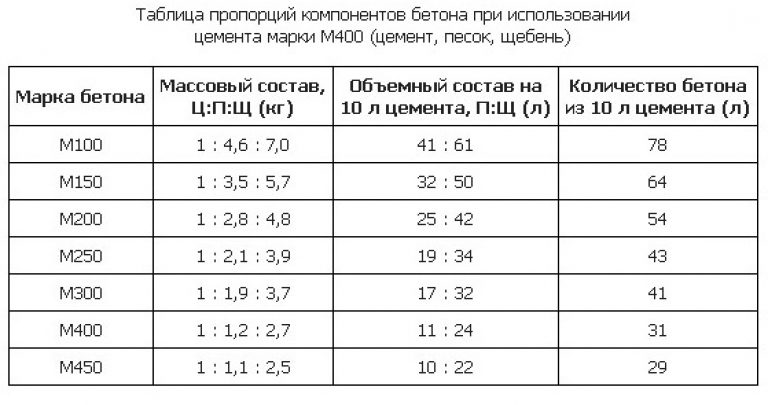
The fine filler is sand, it does not give a solid strength, but necessary to fill emptiness. For construction mixes The compositions are needed from the sizes of fractions from 1.5 to 5 mm, it is desirable - with deviations between themselves within no more than 1-2 mm. High demands are imposed on the purity of the sand, it should not be alive, branches, soil or garbage. Eliminate large particles and lumps easily - enough to sift it through a sieve. Clean the sand from the sludge and small dust is more difficult: to determine the degree of contamination, the material falls asleep in the bucket and poured with water, strong turbidity - a sign of the need for flushing it. In practice, this means tightening the workflow for several days, the filler in concrete is introduced exclusively in a dry state.
Crushed stone, gravel, ceramzite or separations of rocks give the mixture strength: the higher the requirements for the construction structure, the harder they should be. The size of the fractions varies from 5 to 40 mm (in rare cases - up to 70), such indicators as legacy and roughness play an important role. As in the case of sand, the purity of the large-scale filler is monitored, to eliminate dirt and garbage in concrete, it is recommended to carry it out and drying it.
Another controlled characteristic is radioactivity, this indicator is indicated in the certificate and necessarily checked before purchase.
If necessary, prepare a concrete solution with your own hands with non-standard properties (or to improve them) additives are introduced into the composition:
- Color - to give a special color, used in the manufacture of paving slabs or curb elements.
- Frost-resistant inhibitors that increase the binding properties of cement and allow concreting at minus temperatures.
- Plasticizers - to obtain elastic mixtures without increasing the proportions of the indulged fluid.
- Epoxy - to increase strength and hydrophobic properties.
- Substances accelerating or slowing down the hydration process.
- Reinforcing fiber.

To in demand in private construction, the ratios of binder, sand and rubble include 1: 2: 3 or 1: 3: 4, subject to the use of Portland cement with a storage brand M400 or M500. The higher its variety, the less its share in the solution (with sufficient freshness). The water-cement ratio depends on the assignment of the composition and varies from 0.5 (optimal value) to 1.04, but not higher. Excess fluid dramatically worsens the strength of the struck structures, the lack affects the quality of mixing and mobility of the compositions. It is often necessary to cook concrete mix With a specific brand, the regulatory proportions are shown in the table:
| Mark solution | Mass composition for 1 kg of cement, kg | The volumetric ratio of sand and rubble on 10 liters of cement, l | Concrete output by 10 l cement, l | |||
| for M400 | for M500 | for M400 | for M500 | for M400 | for M500 | |
| M100 | 4,6:7 | 5,8:8,1 | 41:61 | 53:71 | 78 | 90 |
| M150 | 3,5:5,7 | 4,5:6,6 | 32:50 | 40:58 | 64 | 73 |
| M200 | 2,8:4,8 | 3,5:5,6 | 25:42 | 32:49 | 54 | 62 |
| M250 | 2,1:3,9 | 2,6:4,5 | 19:34 | 24:39 | 43 | 50 |
| M300 | 1,9:3,7 | 2,4:4,3 | 17:32 | 22:37 | 41 | 47 |
| M350 | 1,2:2,7 | 1,6:3,2 | 11:24 | 14:28 | 31 | 36 |
| M400 | 1,1:2,5 | 1,4:2,9 | 10:32 | 12:25 | 29 | 32 |
The proportion of concrete mixture specified in the table is relevant when using Portland cement is not lower than M400. Entering impurities into the main ratios of components do not affect their volumetric and mass fraction of small. At the same time, the excess of proportions is unacceptable, it disrupts the hydration of cement. In the absence of concrete mixer, it is extremely difficult to achieve their uniform distribution, the exception is soluble options.
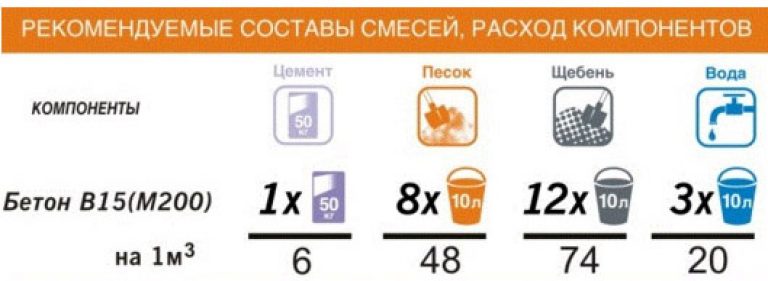
Nuances of the cooking process of concrete manually
Using ready-made compositions Or small volumes of dry components are mixed and gradually inducing clean water. Working with factory options (sandbetone) is convenient, all the proportions in them are already adjusted, the recommended dosage of the fluid is indicated on the package. Prepare a homogeneous solution is easier in a flat or wide tank with a chipset or a symptoms. The concrete mixture is poured with a crater (or collected in a slide after stirring), water is pouring into small portions into the recess in the center, dry ingredients are being vacated from the edges, the process continues until a homogeneous state is reached.
But if necessary, the kneading portions are required to choose the other order of the ingredients connections. In this case, the concrete is kneaded in an old bath or trough, the volume ratio of proportions is easiest to translate into buckets. When using Portland cement M500, the recommended recipe on 1 part of the binder includes 3 sand, 4 rubble and 1 water. Provided good drying of components in buckets, this ratio is 2: 6: 8: 2.

The compound sequence is as follows: 20 liters of water are poured into the tank first and thoroughly stirled with 2 buckets of the cement shovel. Next there is a portion of the 6 buckets of sand, the process is repeated until a homogeneous state is reached. For the uniform distribution of the large-scale filler, the mixture is spilled along the bottom and crushed stone hung over the entire area. The resulting concrete solution is consumed immediately for half an hour.
What should be taken into account
It is important to understand: it takes a lot of time and forces on the branches and for large volumes of work without concrete mixture. All components are prepared in advance, ideally the composition includes fractions of different sizes. The calculation of the required amount of material is required, the proportion and brand of the binder in the process of the kneading do not change.
Also, it is not necessary to forget that in addition to the proper preparation of the mixture, concreting technology includes alignment and concrete seal with subsequent humid care. Works are carried out in the warm season, with a decrease in air temperature below +5 ° C, additional measures are envisaged: heating or input to the additives.
- How to make concrete manually
- Factory concrete
- Rubble substitutes in concrete
- The ratio of components in concrete
Concrete - construction material, which is a binder mixture of cement, sand and gravel.
A mixture of dry components is called dry concrete, such a building composite long years It can be stored in hermetic packages inside the dry room. Adding water makes concrete liquid and ready to use. The finished solution of concrete is frozen for several hours, so its storage period is rigidly limited. After hardening, the concrete forms a solid solid basis in the form of an artificial stone, connecting other building elements (bricks, butt stones, cement blocks, stoves). How to make a solution of concrete, what proportions and sequences need to be observed to obtain a high-quality finished mixture that provides high strength with further solidification?
Preparation of concrete mortar in individual construction
Make a concrete solution can be independently manually or using concrete mixer. It is advisable to produce concrete on their own with small volumes of construction, while carrying out construction with interruptions, in cases of a difficult entrance to the construction of large equipment (machines with concrete mixer), with remoteness from the factory manufacturing concrete (the consequence of the factory's remoteness is too expensive transportation).
Back to the category
How to make concrete manually
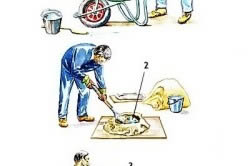
Cooking concrete: 1 kneading. 2. Zoom on plywood. 3. Concrete mixer. 4. Hose to add water. 5. Cement. 6. Sand.
Concrete kneading in small quantities can be performed manually using shovels, trough, dry cement mixture, gravel and water. In order to make a mixture, dry substances - - poured into the construction trough and mixed with a shovel. After their complete mixing is added water. The addition of water is performed in the finished powder conglomerate, such a sequence prevents the formation of lumps. The consistency of the obtained cement solution should be such that concrete can be applied to a shovel, but it was necessary to make an effort for the separation of concrete from the walls or from another mass. finished mixes. After kneading the cement mortar, plasticizers and the required amount of rubble are added. The finished solution is transferred to the place of laying buckets.
With large volumes of construction, it is not possible to make a solution manually manually. Accelerate and partially automate the process of obtaining the finished solution helps a means of mechanization - a concrete mixer.
Back to the category
How to knead the concrete in concrete mixer
The finished solution of concrete from the concrete mixer is obtained as a result of the execution of consecutive actions.
- We install the pear of the concrete mixer at an angle of 45 ° and smell sand into it.
- We add cement parts by stirring it with sand after each addition.
- After complete mixing of cement with sand, we add water. After each portion of water, scroll the concrete mixer for mixing the solution.
- We add crushed stone: the entire required volume of rubble is divided into several parties and smash the portion. After each laying, mix, scrolling the concrete mixer.
Back to the category
Factory concrete
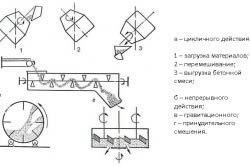
Large construction facilities require large amounts of concrete. Prepare a concrete solution for a large building appropriately on a specialized plant, after kneading, liquid concrete is transported to construction site. In individual construction, the finished concrete solution is in demand due to the guaranteed properties of strength, hardness, fluidity. It contains active additives, providing the level of necessary moisture resistance or thermal insulation.
The finished solution is supplied to the construction site with special concrete mixers, providing constant mixing. Slow rotation of the container with concrete prevents the bundle of the mixture - falling into the sediment of heavy fractions of rubble and sand and upstream of the liquid, called cement milk. The tightness of the transport capacity limits the ingress of additional water in the form of atmospheric precipitation.
Back to the category
Components of concrete components
In essence, concrete is a mixture of cement mortar and rubble (gravel). The cement without rubble perform relatively thin works, forming a small thickness of the solidal layer: the compound of bricks in the masonry, the mump of the slots, plastering the surface. Concrete with added rubble is used in more massive compounds - as a binder when filling the foundation, tracks, scene, primary tie, the base of the stairs steps.
Back to the category
Cement, sand, crushed stone and additives

Comments:
- Cube concrete proportions
- Brand of concrete for overlapping
The choice and acquisition of a certain brand of concrete depends on the purpose of this material. The concrete proportion table shows how component ratio is present in a particular concrete brand. Typically, the project documentation clearly indicates which brand of concrete should be used in the construction of an object. Figures and designations M100, M200, etc. indicate the limiting strength of the material for compression.
To prepare a high-quality concrete mix, it is necessary to fully comply with all the proportions.
Concrete strength has an increasing property throughout the entire hardening cycle. 2-3 days after filling the mixture, one strength indicator is determined, after 6-7 days - another. Under suitable weather conditions, in a month, concrete is gaining design (calculated) strength. The brand range of concrete begins with the M50 brand and ends with a brand M1000. During the construction of residential buildings, the Range from M100 is usually used on M500. If the concrete mix will be manufactured independently, it is necessary to clearly observe all the recommended proportions of the components of the components.
Cooking concrete manually
For those who have never dealt with construction, it is often difficult to understand what a concrete mix is \u200b\u200band how to make it right. But even having extensive experience in the construction of various objects, you can not know some nuances.
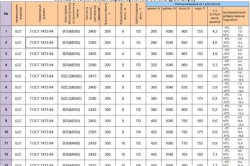
It is not difficult to make a concrete to build a foundation or garden tracks at all. The kneading should be done in the old trough or bathroom. If a small volume is required, you can use an old box that is not sorry to throw it away. If a large amount of solution is required, it is necessary to use special tools during the manufacture: a drill with a special nozzle, a concrete mixer. For the knead, it is possible to use the usual shovel, small garden forks, hoom or any other suitable fixture. However, before proceeding with the manufacture, you need to carefully select suitable components: sand, crushed stone, cement and water.
Concrete strength primarily depends on the quality of cement. Therefore, it is necessary to approach his choice with special care. When buying a material, you should pay not so much on the manufacturer as appearance Material and storage conditions. In mandatory, you must pay attention to the date of manufacture of cement. Over time, its activity is greatly reduced. Especially quickly loses its positive characteristics of a high brand cement. Fresh material during compression in the palm will not turn into a lump and easily pass through the fingers.
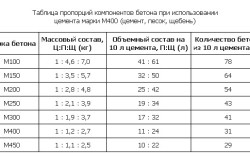
Some unscrupulous suppliers even provide a fake material - cement, mixed with dolomite dust, mineral powder, ash and other fillers. When using it, concrete begins to be slower than grably, and after the frost, insufficient strength becomes. When using poor-quality material a month after the fill in concrete it will be very difficult to score a nail.
In the manufacture of a concrete mix, it is equally important to choose the maximum clean sand, which will not contain impurities in the form of sludge, limestone or clay. Crushed stone should have a rounded shape, its grains should not be more than 50 mm. The most optimal size is 5-20 mm. When preparing a concrete mixture for a screed, for example, make a special mixture with a clamzite with a fraction of 5-10 mm.
Back to the category
The ratio of components in a concrete mix
Table of compositions and is indicated in GOST 7473-94 and in SNiP 5.01.23-83. In order to keep all these proportions correctly, it is necessary to take into account the density of all the ingredients and construction conditions. Pouring and the preparation of concrete solution is possible only after the total counting of the entire required volume and weight of the components of the concrete mixture. In the presented table, you can see which composition and proportion of the components should be the M400 brand concrete.
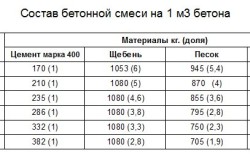
The table shows that the largest proportion is 1 part of the cement, 3 pieces of sand and 6 parts of rubble. In addition to these components, 0.5-1 parts of the water should be added to the mixture to obtain the necessary consistency of the solution. It should not be immediately pouring the entire part of the water: this can lead to an undesirable result that will be fixed very difficult.
Calculation of proportions make regulatory documents. However, it should be borne in mind that not all table parameters can be disposed of thoroughly in practice when cooking kneading. For example, sand may have different humidity, which significantly affects its weight and volume.
In order to optimally bring the normative indicators to real, it is necessary to dry sand and crushed stone as it is possible.
The convenient container can be alternately filled with various components (not tamping) and determine the weight of the desired proportion. After that, determine the necessary proportion of each component in the bucket ratio.
Back to the category
Cube concrete proportions
To obtain proper consistency of the concrete mix, it is necessary to take into account the following indicators:

Crushed stone for the preparation of concrete should have a rounded shape, and its grain should not be more than 5 cm in diameter.
- the necessary strength of the material;
- proportions of components;
- required plasticity;
- cement brand;
- characteristics and properties of components.
For example, to obtain the 1st Cuba of Concrete M200, you need to take the following amounts of materials:
- Cement - 330 kg (0.25 m³) with a bulk density of 1300 kg / m³.
- Rubble - 1250 kg (0.9 m³).
- Sand - 600 kg (0.43 m³).
- Water - 180 L (0.18 m³).
When summing the volumes of each component, 1.76 m³ is obtained. Although 1 cube is actually obtained. All ingredients, mixed with each other and filling out all empties, form a dense mixture without air bubbles.




